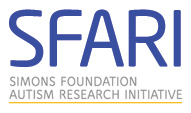- >>
- Healthy Adult Studies
- HCP Young Adult
- News
- Article
HCP in the News: An Autism Research Perspective on the Connectome Data Release
 The Human Connectome Project announced the release of an initial open access data set this week at the Society for Neuroscience 2012 conference, and already people are taking notice.
The Human Connectome Project announced the release of an initial open access data set this week at the Society for Neuroscience 2012 conference, and already people are taking notice.
Rather than studying individuals with a particular neurological disorder, the HCP is generating a high-quality data library that will eventually include 1,200 healthy adults between the ages of 22 and 35. This effort should be useful in many avenues of neuroscience research. The Simons Foundation Autism Research Initiative (SFARI) spoke with principal investigator David Van Essen, and has published a perspective on how the initial HCP data release impacts autism research.
The initial HCP data release includes several types of MRI scans from each of 12 subjects. It comes at the two-year mark of the project, just two months after the beginning of Phase II – the production phase in which recruited subjects are studied using a customized set of MRI scans and behavioral tests. The first phase of the project was spent developing and refining scan acquisition methods in ways that dramatically improve scan quality to provide a more accurate reflection of brain structure, function, and connectivity. This emphasis on quality may have an impact on some existing interpretations of brain circuitry in autism.
Some of the tools that might be particularly useful for autism research are methods for correcting for movement in functional connectivity imaging. “This is a problem we’ve known about for years, but the magnitude of the problem has only recently been apparent,” says Van Essen.
If a participant moves more in the scanner, it appears as if they have more short-range connections. This is especially problematic in autism because a shortage of long-range connections and an abundance of short-range connections have been proposed to underlie some of the deficits associated with the disorder. Researchers disagree over whether findings from existing studies show a real difference or merely an artifact.
A number of methods have been developed for correcting the problem, and Van Essen says they are evaluating some of these as part of the project’s pipeline, which they also plan to release publicly.
As more scientists get their hands on the data being produced by HCP, it is likely make a significant impact on many branches of neuroscience research.
Read the full article at sfari.org.
Get access to HCP public data releases.